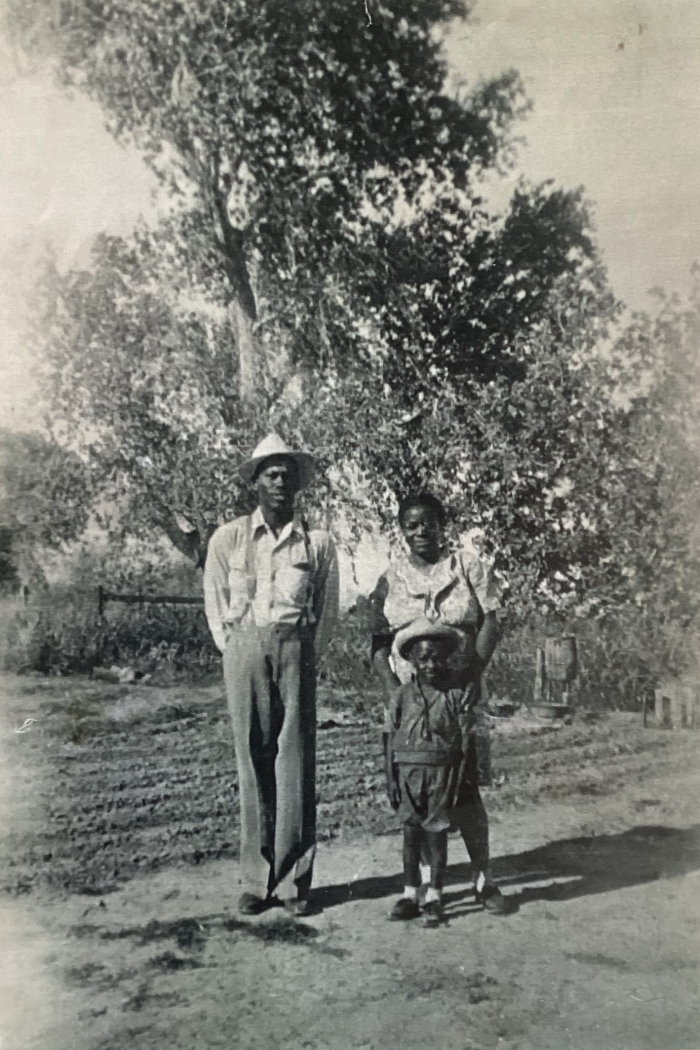Black History Month celebration to highlight forgotten Black Phoenix community

Sidney Poitier New American Film School Assistant Professor Carla LynDale Bishop will debut her new work preserving the stories of the historically Black Okemah community at a two-day Black History Month event in Mesa. Courtesy photo
There is much to be joyous about during Black History Month.
Making space for Black joy is what Carla LynDale Bishop, assistant professor at The Sidney Poitier New American Film School at Arizona State University, is doing with her two-day Black History Month event, “Mapping Blackness: Mapping Okemah Community Event.”
The festivities kick off at the Media and Immersive eXperience (MIX) Center in downtown Mesa at 7 p.m. on Friday, Feb. 9, with a free public outdoor screening of the 1978 musical fantasy “The Wiz,” a Black film classic starring Diana Ross and Michael Jackson in a Black spin on “The Wizard of Oz,” in which Dorothy isn’t a Kansas farm girl, but a Harlem schoolteacher.
Guests who arrive early will be treated to catered plates of soul food, including chicken wings.
"Mapping Blackness: Mapping Okemah Community Event"
Saturday, Feb. 10
noon to 5 p.m.
MIX Center, Mesa
“Black history includes celebrating Black joy, Black excellence and Black talent. ‘The Wiz’ is full of that,” Bishop said.
Bishop also sees in “The Wiz” resonance of her own work in her project Mapping Blackness, which blends traditional documentary storytelling with immersive media like augmented reality, 360 video and geotagging, made with the help of Meteor Studio and ASU Prep students. The intergenerational project that trains youth to interview elders in their communities results in a living, breathing archive of historically Black communities often left off maps. Bishop’s work incorporates stories, photographs, narratives and 3D renderings of communities whose legacies must not be forgotten.
“The lyrics to the song ‘Home,’ sung by Diana Ross in ‘The Wiz,’ exemplify the nature of home in Mapping Blackness,” Bishop said. “What is home in relation to Black communities, especially if that home no longer exists? Mapping Blackness explores the notion of place-based storytelling and community storytelling, centered on what home means in the Black community.”
On Saturday, Feb. 10, beginning at noon, Bishop will give a demonstration of Mapping Blackness, debuting her work documenting the lost community of Okemah. The historically Black community was established in the 1920s in southeast Phoenix and was one of the few places in the Valley where Black families were able to own land and build homes. Today, it is an industrial-zoned area, full of barbed wire, big rigs and building equipment, cut through by the I-10 freeway.
“Okemah was (designed) with a purpose, built by total strangers who barely knew each other to create a community with culture and values,” said Doris Lamkin Burt-Johnson, president of the Okemah Community Historic Foundation. “Okemah was a sense of a community that created a feeling of belonging that was supportive and valued.”
Bishop wants the weekend to be a true community celebration, incorporating kids’ crafts, refreshments and additional screenings Saturday afternoon of joyous Black film classics “Cooley High” and “Five on the Black Hand Side.” She wants the focus on home to help people think about Black history not just as events from a history textbook, but as community and togetherness.
“It is important that people know that these communities existed. They are a part of Black history, American history, and made great contributions to society,” Bishop said. “Mapping Blackness is a place for these stories, their histories.”
More Arts, humanities and education

‘It all started at ASU’: Football player, theater alum makes the big screen
For filmmaker Ben Fritz, everything is about connection, relationships and overcoming expectations. “It’s about seeing people beyond how they see themselves,” he said. “When you create a space…

Lost languages mean lost cultures
By Alyssa Arns and Kristen LaRue-SandlerWhat if your language disappeared?Over the span of human existence, civilizations have come and gone. For many, the absence of written records means we know…

ASU graduate education programs are again ranked among best
Arizona State University’s Mary Lou Fulton College for Teaching and Learning Innovation continues to be one of the best graduate colleges of education in the United States, according to the…


